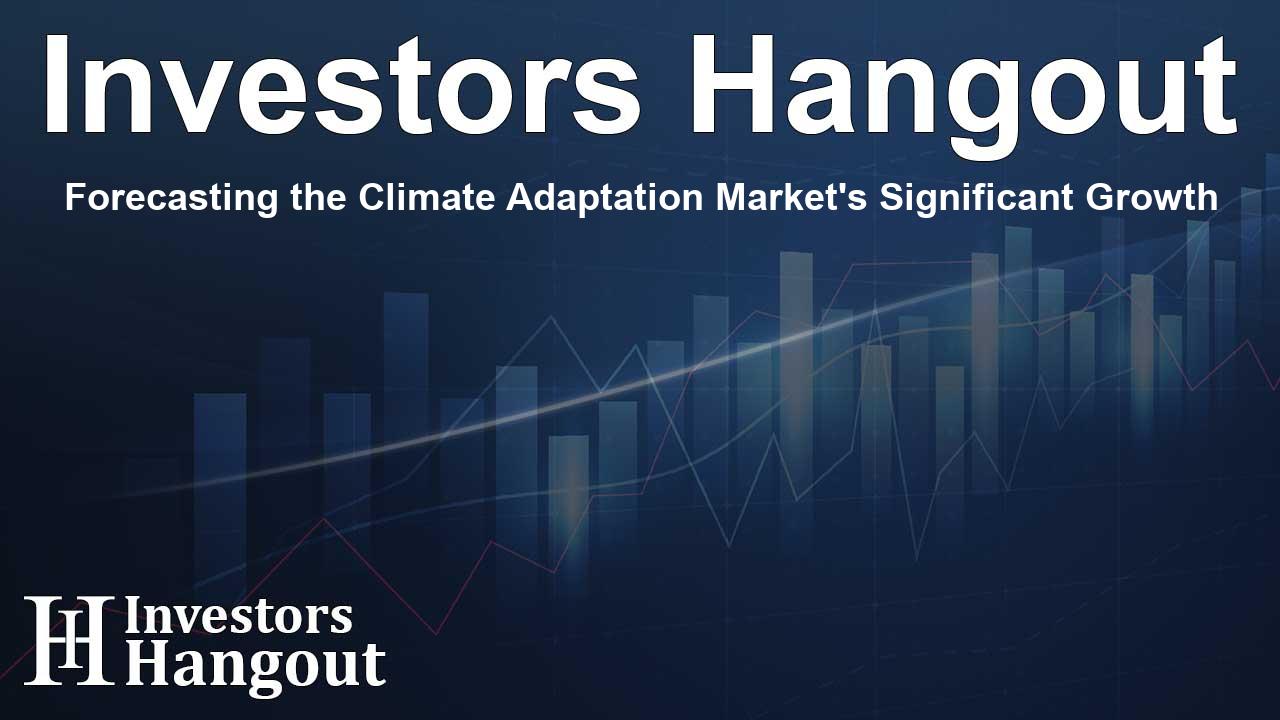Forecasting the Climate Adaptation Market's Significant Growth

Market Outlook for Climate Adaptation
The global climate adaptation market is on an impressive growth trajectory, anticipated to increase from USD 20.85 billion in recent years to an incredible USD 49.24 billion by the early 2030s, reflecting a robust compound annual growth rate (CAGR) of 10.0%.
Understanding Climate Adaptation
Climate adaptation refers to the necessary adjustments made to deal with the consequences of climate change. It involves a blend of preventative strategies and behavioral changes aimed at mitigating damage and seizing any opportunities that arise from changing environmental conditions.
Examples of adaptation may include major infrastructural upgrades, such as building defenses against rising sea levels, and individual habits, like reducing exposure to extreme heat or looking out for vulnerable community members.
Components of Climate Adaptation
At the heart of climate adaptation lies the ability to foresee the adverse impacts of climate change and devise strategies to counteract them, thereby ensuring the sustainability of ecosystems and human societies alike.
Key Insights and Market Dynamics
Several factors are currently influencing the climate adaptation market:
- The strong influence of government initiatives and regulations aimed at mitigating environmental crises and carbon emissions is pivotal in shaping market dynamics.
- Market segmentation is generally categorized by type, end user, and geographical region, allowing precise analysis and targeted solutions.
- Within the segmentation by type, early climate warning systems and environmental monitoring technologies are predicted to experience the highest growth rates in the upcoming years.
- Regional insights highlight significant activity in areas such as Asia Pacific, Europe, North America, and Latin America, each with distinct characteristics and growth potentials.
Drivers of Market Growth
Three principal drivers are propelling the growth of the climate adaptation market:
1. Increasing Frequency of Climate Events
The rising incidence of extreme weather events—including floods, hurricanes, and temperature extremes—demands proactive adaptation efforts. This has led communities, corporations, and government bodies to invest more significantly in adaptive solutions, driving market growth.
2. Regulatory Compliance
In response to new legislation, organizations are compelled to bolster awareness of climate change impacts, significantly increasing demand for adaptive solutions.
3. Advances in Technology
Innovations in technology—from enhanced weather prediction systems to improved materials for resilient buildings—are vital in fostering the market's expansion. These advancements facilitate better responses to the challenges posed by climate change.
Geographical Insights on Market Performance
North America has emerged as a leader in the climate adaptation market. This is bolstered by the presence of numerous industry frontrunners such as Exxon Mobil Corporation, contributing cutting-edge solutions to address climate challenges.
Simultaneously, the Asia Pacific region is expected to witness one of the fastest growth rates in this sector, driven by heightened climate change awareness and significant advancements in climate adaptation technologies across various countries.
Market Segmentation Breakdown
The climate adaptation market can be segmented into several categories, enabling deeper analysis:
By Type:
- Nature-Based Solutions
- Technology-Driven Adaptation
- Enhanced Natural Processes
- Early Warning and Monitoring Systems
By End User:
- Power Generation Sector
- Oil and Gas Industry
- Chemical and Petrochemical Sector
- Government and Regulatory Bodies
By Region:
- North America (including US and Canada)
- Europe (featuring countries like Germany, France, and the UK)
- Asia Pacific (covering major players such as India, China, and Japan)
- Latin America (including key markets like Brazil and Mexico)
- Middle East & Africa (notable markets in Saudi Arabia and UAE)
Frequently Asked Questions
What is the projected growth rate of the climate adaptation market?
The climate adaptation market is projected to grow at a CAGR of 10.0% over the forecast period.
What are some key factors driving market growth?
Increasing extreme weather events, regulatory compliance needs, and technological advancements are among the main drivers.
Which regions are leading the climate adaptation market?
North America currently holds the largest market share, with Asia Pacific expected to register the highest growth rate.
What are the main categories in market segmentation?
The market is segmented by type, end user, and region to provide a detailed market analysis.
Who are the key players in the climate adaptation market?
Key players include major companies such as Exxon Mobil Corporation and IBM, known for their innovative solutions and contributions to the industry.
About Investors Hangout
Investors Hangout is a leading online stock forum for financial discussion and learning, offering a wide range of free tools and resources. It draws in traders of all levels, who exchange market knowledge, investigate trading tactics, and keep an eye on industry developments in real time. Featuring financial articles, stock message boards, quotes, charts, company profiles, and live news updates. Through cooperative learning and a wealth of informational resources, it helps users from novices creating their first portfolios to experts honing their techniques. Join Investors Hangout today: https://investorshangout.com/
Disclaimer: The content of this article is solely for general informational purposes only; it does not represent legal, financial, or investment advice. Investors Hangout does not offer financial advice; the author is not a licensed financial advisor. Consult a qualified advisor before making any financial or investment decisions based on this article. The author's interpretation of publicly available data shapes the opinions presented here; as a result, they should not be taken as advice to purchase, sell, or hold any securities mentioned or any other investments. The author does not guarantee the accuracy, completeness, or timeliness of any material, providing it "as is." Information and market conditions may change; past performance is not indicative of future outcomes. If any of the material offered here is inaccurate, please contact us for corrections.